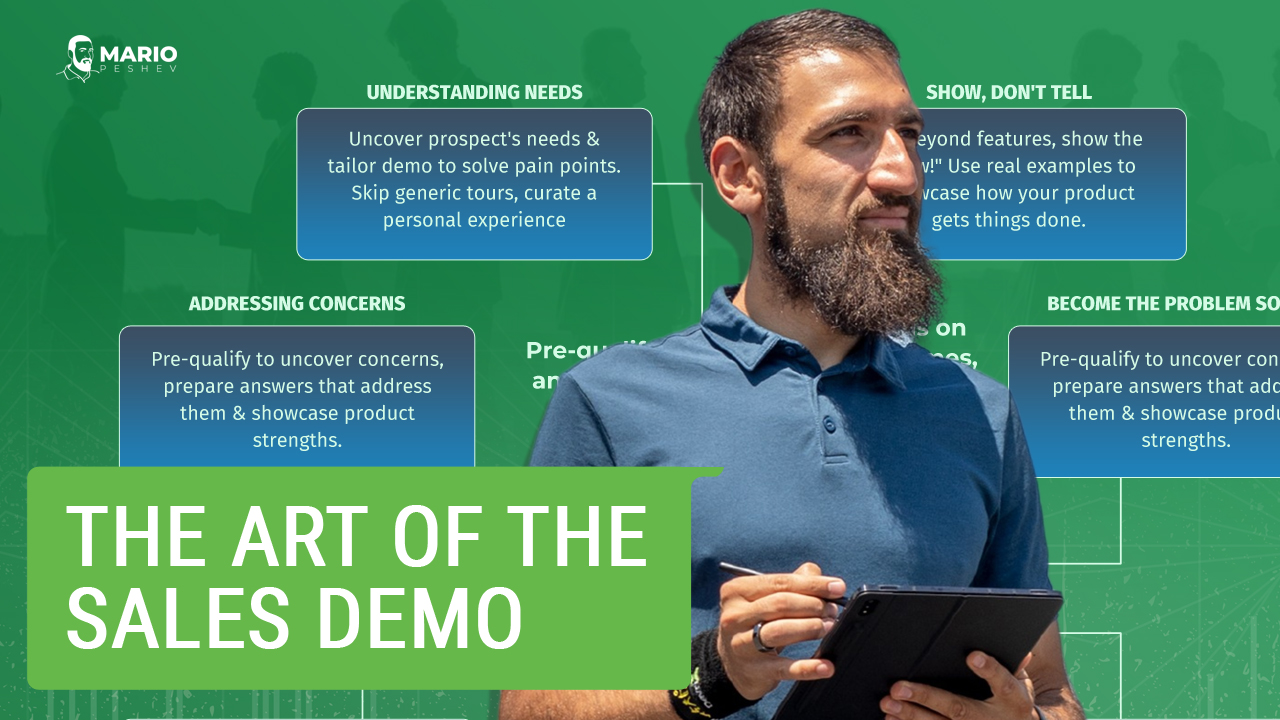Every single business struggles with growth. And of the many challenges that starting businesses and even growing ones face, generating new clients is of utmost importance.
Often, service-based businesses struggle more in this aspect compared to product businesses, which is why we’ve generated this list for you that would help you generate more clients for your business.
So, here are some of the best lead generation strategies.

1. Starting With Landing Pages
What you need to start with is a landing page, or also known as a sales page.
Landing pages are the key to breaking down the best type of content that you want to produce and sell to your customers. It is essentially your virtual brochure for the types of solutions that you offer. This is often a given for many businesses out there.
However, it is important to know that lots of small and mid-sized businesses do not really invest heavily in their digital assets, which is why they don’t have landing pages. If you fall into the same category, definitely consider taking the following steps:
- building landing pages
- exploring your services better
- defining what works best
- identifying your target audience
- solving business pain points
It makes it a lot easier to use these landing pages for sales materials across different campaigns.
2. Pay-Per-Click (PPC) Campaigns
Now, PPC is one of the fastest ways to start pouring some revenue or pouring some budget into paid campaigns in order to start targeting prospects. Most networks out there, including Google, LinkedIn, Facebook, Instagram, and Twitter among others, let you run paid campaigns towards specific pages of your website such as the homepage or the landing pages, whichever is a little better.
PPC allows you to target the best demographics and your ideal customers depending on your buyer persona and pitch them the right landing pages that you want them to visit and start converting.
Now, paid campaigns are of course paid, so we need to invest some money into these campaigns. However, if you are in a rush to generate customers, it is better to really start investing in lead generation, which is what we’re talking about here.
3. Remarketing
Once you start boarding traffic to your website, the first thing you are probably going to notice is that a good chunk of this traffic is not really converting. This is more or less the usual trend in the industry. And for many businesses, conversion rates are around 2% or so.
Service-based businesses may even see lower percentages simply because services tend to be more expensive and more time-consuming. It is not like paying five dollars for a digital product, which is why remarketing comes to help.
Here is how it works: When you have certain pixels installed in your website through social networks, such as Facebook or LinkedIn or Twitter, or even Google, all of your visitors are going to receive a cookie on their browser when they visit your website, which is why if you run paid campaigns tailored to remarketing, customers who have already visited your website are going to see your campaigns on their social networks, such as Facebook or Google.
This is a great way to return a portion of your customers that are already familiar with your brand and potentially turn some of them into paying customers.
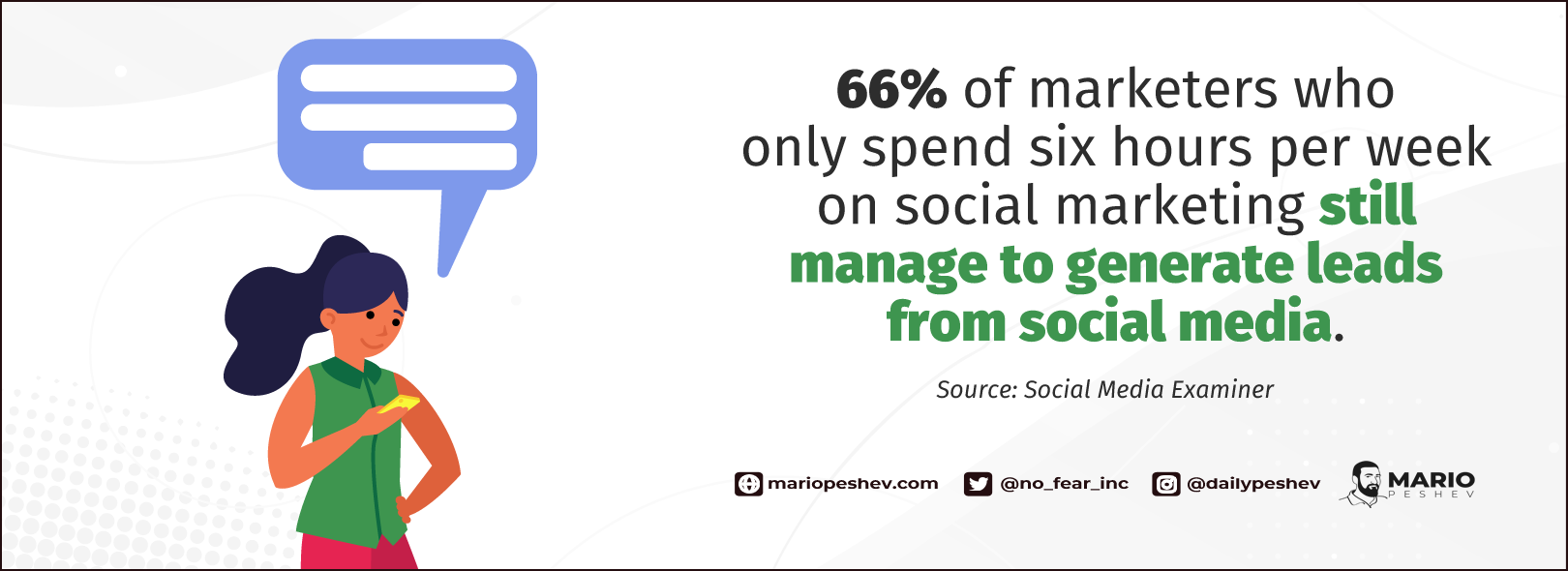
4. Search Engine Optimization (SEO)
Search engine optimization is really popular and it is definitely one of the things you need to take care of. However, I’m going to add a disclaimer that even though I love search engine optimization, it is a really slow process to get there.
With that being said, investing in your business is not really a short-term game. So, in any case, you need to invest in building a brand and working towards search engine optimization as well. This is why it is really important to start producing content because first off content really helps to position your entire site and brand better.
Second, invest in producing content. The best type of content to invest in should be problem-solving content for your target audience that is going to be extremely helpful in the sales process.
Check out this sales guide we have curated for more discussions and tips for handling the sales process better.
5. Collaborations
Try to work with different peers on your end, potential partners, other agencies of this kind, other vendors that contribute to the same target audience, so that you can work on different initiatives together. This way, you can turn some of them into referrals.
You can work on shared events together and create a lot of different spectacular things. When you find the right people, it is a lot easier, even if you are working on the same campaigns together, to amplify the efforts.
6. Webinars
Webinars are one of the best ways to convert customers, especially during the times of COVID or any form of remote working environment.
Organizing webinars is a great way to essentially present what you are offering to your customers without being too salesy. The best webinars focus on solving the pain points of your target audience, which is why when you announce a webinar with a topic that resonates with a lot of people, you can expect several sign-ups.
Through webinars, you get the opportunity to explain a problem, teach, and present how your solution or services solve their problem. Some of them are going to convert.
7. Virtual Events
Many event organization companies are investing in virtual events instead.
Lots of small businesses also invest in virtual events. You can either start your own or try to join other events too.
Virtual events allow you to pull a list of attendees, offer digital freebies, or set appointments online.
They present more opportunities to expand your brand to multiple parties at the same time.
There are lots of software applications that allow you to hop on to network rooms, or maybe join a slack community, which will present you to potential customers.
8. Sponsorships
There are different ways to position yourself as a sponsor. Once again, it requires some investment, but maybe there is a conference where your ideal customer hangs out or a product that your customer uses.
You can help promote and get some exposure through a podcast, a newsletter, or anything else where your customers hang out. Consider this because if you know where your ideal potential customer hangs out, this may actually be your best investment.
Try to find a crowd with a different business segment, but should not be a competitor, and sponsor it as best as you can. You may be a featured speaker or they can do an interview with you, hop on a podcast. Get any chance to present to your audience.

9. Organizing Events
Earlier, we mentioned how you can organize virtual events to generate leads. Now, we would also like to highlight that organizing events has also become easier in many ways.
You can create webinars, small conferences, or office-based events. But essentially, this can be a great way to find other sponsors or partners or just other people promoting that, and bringing conditional brand recognition to your business.
If you can create an event where you are helping out like, you know, free consulting day or solving your most painful problems with something or whatever it is, depending on your target audience, this may convert real well for you as well.
10. Looking Into Marketplaces
Now, depending on the type of solutions that you offer, there may be some marketplaces that may be suitable for you. Most marketplaces are positioned towards products.
However, there are some marketplaces that are service-based. Some out there can actually enable you to turn your service into a product or just package it one way or another and hop on the selling train.
The main thing about marketplaces is that they do their own marketing. Your customers hang out there and potentially, you can observe them this way. Or, once again, you can even partner with a marketplace vendor and upsell your services through them in exchange for a commission.
11. Outsourcing Networks
At this point, let us talk about outsourcing networks such as Upwork, Freelancer.Com, Fiverr, and many others.
While your services may be more expensive, or maybe you incur more overhead, this is not necessarily a bad idea to fill in some quote, especially if you have some spare people sitting on a bench or some people who simply have extra availability. This may be a good way to adjust and generate a better profile, connect with some peers, or simply find your best customers through those networks and generate long-term relationships.
Once again, it is a solution that is often the last resort, but sometimes you may be surprised what sort of prospects you can find in some of those networks.
12. Asking Referrals
Unless you are just starting out with your business, you have former and existing clients that you work with. So, if you are looking for new customers, ask for referrals.
This is something that I often do with my clients as a business advsior. We have regular calls here and there, or whenever we have extra availability or we just hired five new people. You will never know for sure who needs help unless you ask around.
It’s not an infinitely scalable channel – but it works occasionally. The main thing is that, if you keep this idea on the radar of the people that you know just in case an opportunity arises. Just try not to be intrusive or annoying for better chances of getting referrals.
13. Building Strategic Partnerships
We have already talked about the different types of partnerships you can foster but this time, let us talk about building very close partnerships with a specific company.

Hire me as your business advisor
As an example, if you are a web design shop, you may build a very strong partnership with an SEO company, a hosting company, or a development partner. These partnerships often entail that you have an almost exclusive partner for a certain type of deal. You may even build specific landing pages and offer services together. You may join conferences together, and to just appear as a larger business, providing a larger set of services this way.
Building these tight relationships can amplify your lead generation efforts more especially if you are going to help both businesses at the same time.
14. Revisiting Old Leads
The best solution that every business needs is a CRM or a Customer Relationship Management system. Lots of small businesses don’t have CRMs and they use their emails or Excel sheets with contact details, or maybe some scattered conversations here and there.
Whatever you are doing, unless you are not using a CRM yet, definitely set one up. We do have sales CRM, which is a hosted solution or Drupal CRM, which is a WordPress-driven solution that will help you out in that certain case. But most importantly, definitely spend some time and populate all the leads into your CRM system.
Now, having said that, over time you accrue a specific number of old clients that may not be a great fit at the time, or maybe you have worked with them and they no longer need your services. Over time, things change. Following up with old leads or old customers may be a great idea to just rekindle existing relationships and turn that into a new business opportunity.
15. Examining Your Website Traffic
If you bring leads or any type of traffic to your website, you can potentially discover more about the type of customers that are coming in. Solutions like Leadfeeder or Snitcher, will help you identify some of this incoming traffic, including the opportunity to tell you what type of business, based from their IP address, access what sort of pages on your website.
This may be extremely valuable for various cases, especially if you are on a sales call and then you discover that they actually browse your website afterward, or they read a specific case study or something else.
These tools are definitely helpful in generating new leads since through it, you can touch base with businesses that did not really get in contact with you.
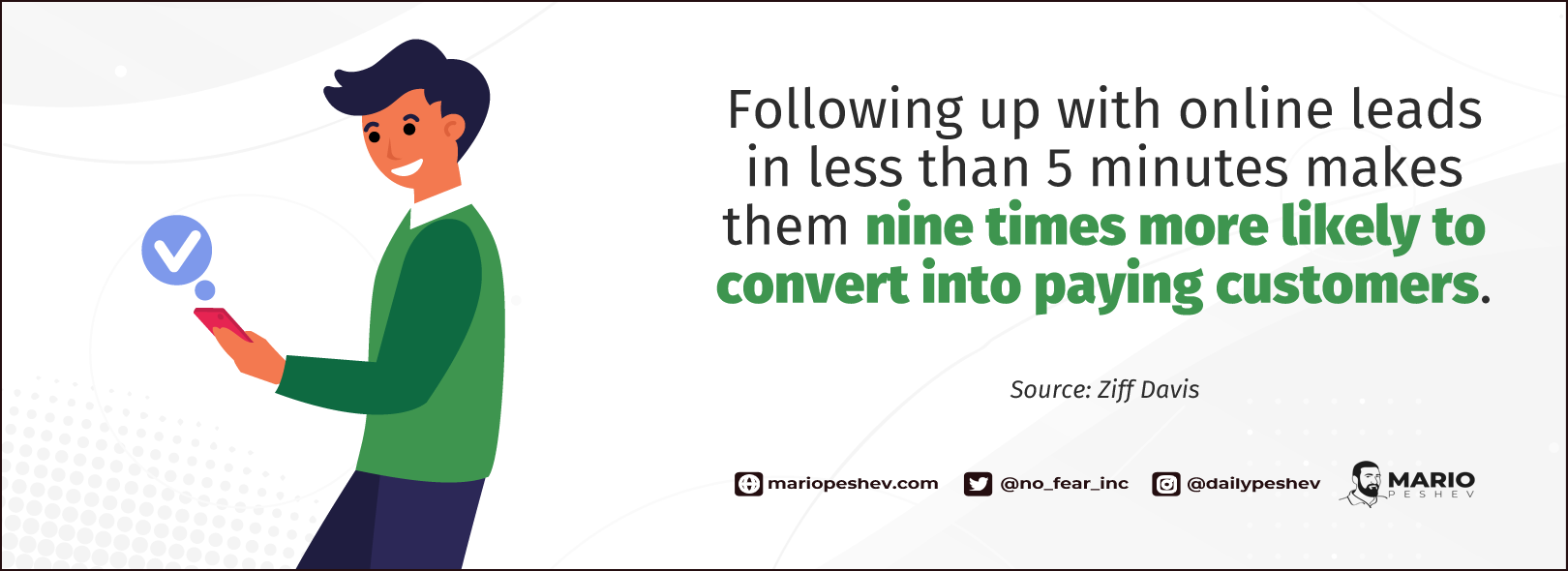
16. Online Review Catalogs
Different business niches have different review websites that regularly post features of “The Best X Type Of Companies” that you can probably get listed on.
If you are listed on this, but you don’t have enough ratings and reviews, reach out to your clients and ask for them to leave some reviews or share positive feedback.
Now, once you and those review websites are oftentimes used by businesses, just ensure which vendor they want to work with. So they want to browse the number of vendors depending on ratings and reviews, which is why it is an excellent opportunity for you to get elicited in one of those new networks and start receiving some recommendations or some business. One of the networks that we use oftentimes is Quitch.com. This is a common network for lots of different digital service-based businesses. And oftentimes, we get some leads through quotes as well.
17. Providing Niche-Tailored Solutions
If nothing works out right now, try to niche down even further and provide a very niche-tailored specific solution that is just easier to sell.
Instead of selling design services or SEO services, for example, try to provide design services for designing brochures for legal firms or for restaurants. Instead of just generic design services, create powerful landing pages for dental practices if this is the type of business that you work with.
So, this way, it would be really easy to just simplify the type of solution that you have, make it a lot clearer and more actionable. Explain it a little better and just focus on providing that specific type of service for a while, until you can sell, upsell, and scale this opportunity further.
What you currently need is a larger number of customers, so try to break down some of the services that you do into smaller sections and promote them separately instead.

18. Productizing Your Services
Yes, I understand very well how hard it is to put a price tag on a service. Unlike pricing manufactured goods, which you can calculate fairly easily because it can be automated and every item looks alike, services are a lot different and there is a lot of context going on.
However, you can try to simplify that to at least identify certain services that you could put a price tag on. For example, there could be a discovery session, a branding consulting session, a monthly maintenance package, or anything else that you can sell.
My advisory community started this way. Since I cannot serve hundreds of clients at a time as an advisor, this is an affordable way to build a larger community, share tactical tips, gather on Slack, provide my workbooks, and still deliver value with less 1:1 time.
This makes it a little easier for potential customers to figure out how much you are charging, what you are charging for, what is included in those services, which normally make the sale easier.
19. Cold-Calling or Cold-Emailing
Of course, we need to add cold-calling and cold-emailing to the list.
One of the reasons why these two still work is that there are a lot of businesses that simply have not heard of your business.
Eventually, it is a number’s game.
If you have a certain portfolio of businesses you can reach out to, or if you have sponsored a certain event and you have access to attendees, or maybe if you cross-share audiences with another business, this may be a great opportunity to reach out to new possible audiences.
20. Upselling and Cross-Selling
If you currently work with a number of clients, try to upsell them to a bigger package or cross-sell different services to them. Now, there are different ways to structure that.
In terms of upselling, what you can do is try to provide additional services for the specific business, which is essentially more hours of more consulting work, more strategy, and so on. In terms of cross-selling, it is a similar concept. However, you can also sell them products that you may have. You may also tap into different affiliate networks or other services, or other vendors and top sell their services and take a commission off of that.
Essentially, try to retain your customers in the same space. For instance, if you are doing web design or development work, you can also resell hosting solutions as an additional thing, managing hosting, and taking a maintenance fee as another revenue stream.
21. Technology Listing
This is a similar concept to cold-calling or emailing, but essentially working with a more narrow niche.
If you know the type of technology, such as the type of content management system, or anything like that, that your customers are using, you can actually find different platforms built with or similar ones, and actually get a list of websites using those technologies.
So, this would make your pitches a lot more personalized and you can even run some paid campaigns for these audiences.
22. LinkedIn Outreach
LinkedIn works in a similar fashion to email lists. However, LinkedIn is a little more personalized. It is really hard to get into a specific spot.
Filter whenever someone reads your message or whenever someone accepts your request, and you have the opportunity to actually position yourself better and prospects can actually look up your referrals, recommendations, or previous work. It is a lot more personalized this way. It is a lot more B2B.
LinkedIn itself has a LinkedIn Sales Navigator, which is a paid solution for that. And there are different tools that you can look up that profile in kind of sales automation.
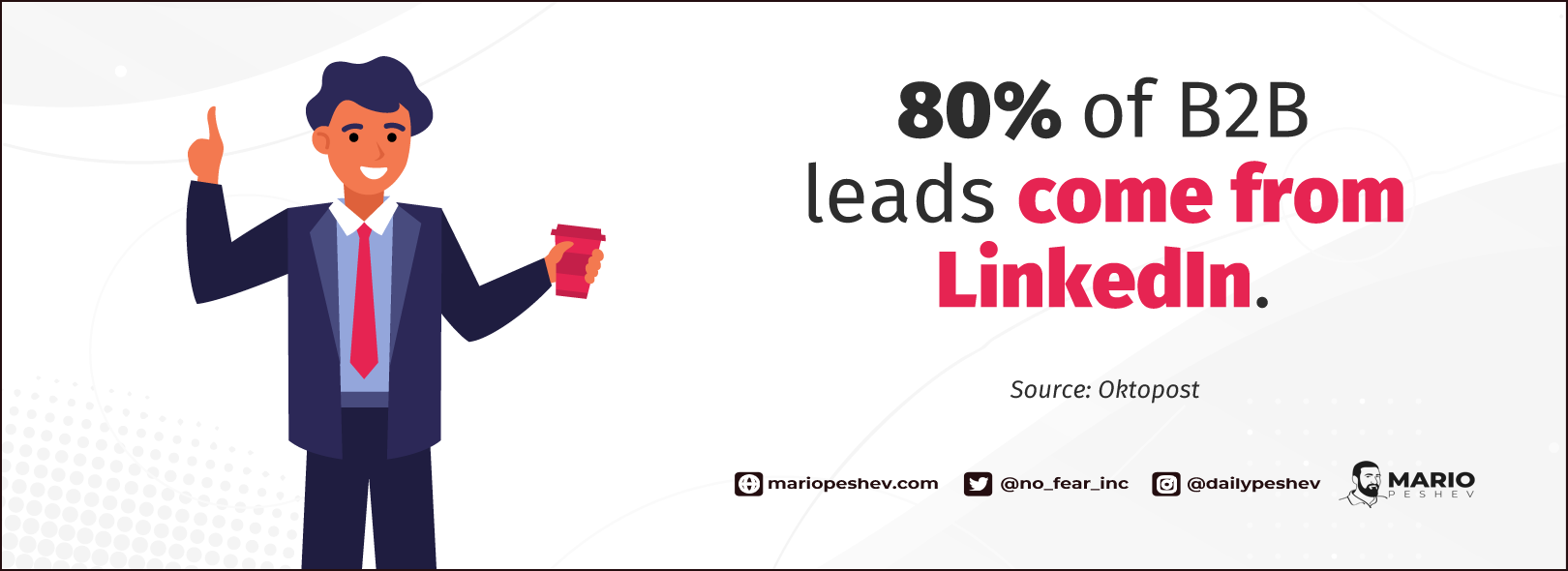
23. Offering Free Test Runs Or Consultations
If you work within a very expensive space, try to offer a kind of limited amount of free trials or free consulting. Of course, it is going to eat up some of your time, but it is a good promotion opportunity.
Also, pro bono is essentially good for building your reputation. You may even have a landing page for an application process for free trials, or you can draw free consulting as a prize to an event, where you can do a lot of different things just to be able to position yourself better in front of your customers.
24. Reseller Or Affiliate Programs
Once again, if you want to find different revenue streams, you can work with a different company. You may go for product companies or service-based ones in another industry and work with their affiliate program.
More importantly, you can also work on building your own reseller and affiliate program which will motivate and incentivize other businesses to promote and cross-promote your services.
Now, in terms of services, it is a little bit trickier but some entrepreneurs such as Dan Lok have promoted the high ticket sales system, which trains a lot of people out there to sell expensive services such as training courses or just expensive solutions.
This way, you may actually look for high ticket closers on LinkedIn or other networks and offer them an exchange, a discount, or a kickback for 5%-15% in exchange for closing customers through them. This will grow your sales without having to pay upfront, which is a great opportunity to just create a specific network that generates revenue for you.
25. Leveraging Your Existing Network
A lot of people from high school, former companies, or different places and walks of life. And this is a good opportunity to get in touch with them and try to figure out whether they need something or someone they know needs something. Again, it is a numbers game.
You may feel uncomfortable doing that, but you can always position it in a way that doesn’t sound mean. You can say something like this:
“Hey, we are launching a new solution or a new service and we’re onboarding new clients. Would you be interested or do you know someone else who would be interested?”.
Or, you can say something like this:
“Hey, we just have a solid 30% discount on our services for the next three weeks. I’m not sure if it is something you are interested in, but I am glad to extend this offer. If you are interested, I’m happy to set up a call and discuss that further.”
Again, you can position it in different ways so that it makes a lot of sense. But tapping into your own network is a great way to find leads for your business.
26. Collecting More Reviews
Sometimes, potential customers land on some of those review websites or your own website and would like to know further if you offer legit services.
This is why you need more testimonials and more reviews that can validate your being a real business. Get in touch with all your clients to gather as many reviews as possible.
Reviews are gold. They are the truest currency in the world. So, the more of them you collect, the more trustworthy the business appears, and the more likely it is to close new customers.
27. Creating Case Studies
Case studies are another gold mine when it comes to building trust. Even if you have great reviews on your website, unless you have a showcase of what exactly you are doing for different businesses, it is really hard to convert most leads.
Having case studies for works that you have already done provides the right type of proof for the right type of businesses that you are working with and the right type of solution that you are solving.
It is a lot easier for prospects to relate to the type of problems that you solve. Even if you can generate case studies, what you can do is create your own case studies. I’m speaking about use cases of things that you have done or things that you can do in an exemplary scenario, so that customers can better understand how you work, what your work processes are, how your team is structured, and so on.
If you have Non-Disclosure Agreements or NDAs, try to make anonymous case studies that really make you shine a little better and explain how you work in the types of solutions that you build for different businesses.
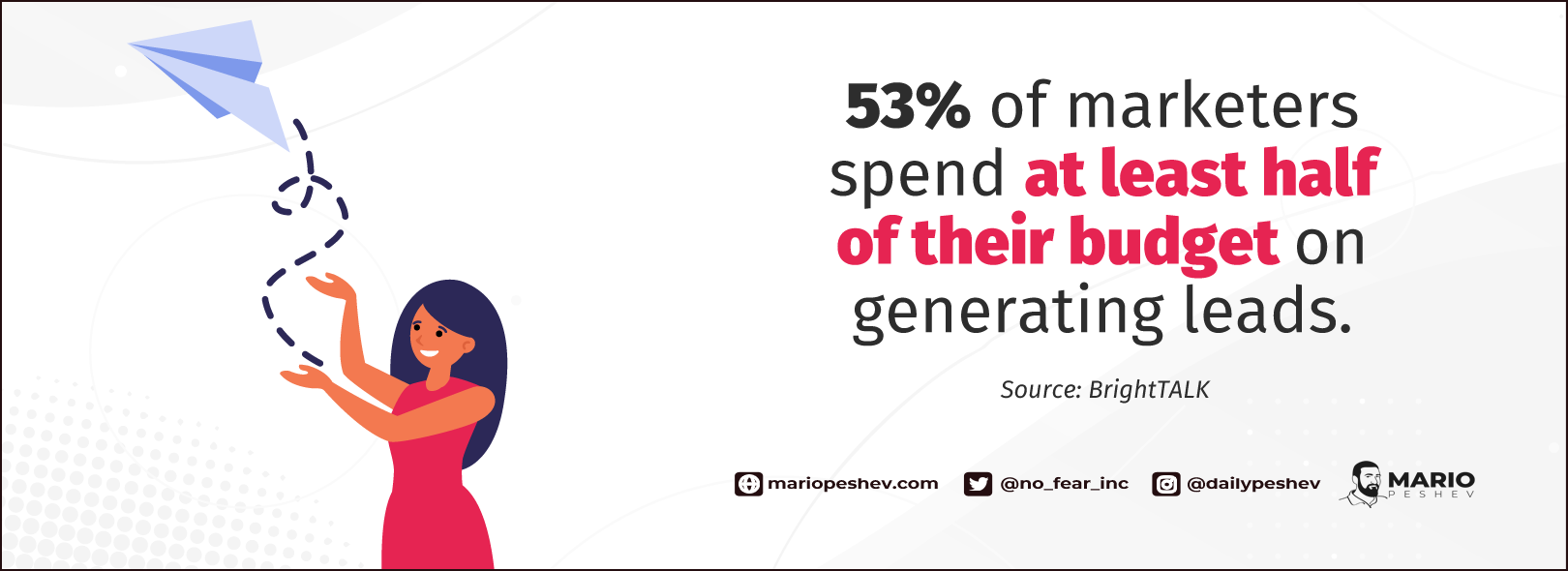
28. Finding an Easy, Scalable Entry
If your services are expensive, for example, your product starts from $20,000 to $50,000 or anything like that, some customers may find the rate too steep to give it a try. Earlier, I already gave you a hint of offering free consulting or anything like that.
But, try to create one or two hooks based on your services that are a really easy entry for your potential clients. For instance, this may be a $1,000 door discovery session with the blueprint for the business.
This could be a research or a report. This is just a lot more cost-effective or easier way. If you have projects that start from $20,000, try to do a quick review that’s an entry kind of gateway type of product so that you can get your foot through the door.
29. Investing in PR
There are a lot of different ways to engage in public relations, but essentially, what you need to aim at is really building the right type of brand. And as John Hall, one of the famous entrepreneurs out there, says, “You should always be top of mind.”
In order to be top of mind, you need to position yourself better depending on activities that you’ve done yourself. There are easy ways to start with that.
First off, you can simply order a press release for a new service you’ve introduced or a client to disclose, or anything that happened in your life. It doesn’t have to be super exciting or super enormous. Just something that really brings some value and builds some credibility for your brand.
Additionally, you can work on guest posts, submitting authoritative expert opinions and articles on popular websites, hopping onto interviews, and trying to be interviewed through different networks, such as HARO or Help a Reporter Out, applying to speaker podcasts, getting all sorts of exposure that you can. This way, you can once again position your brand better, position yourself better, and potentially, find customers.
30. Joining Online Communities
There are lots of communities online where you can possibly find your clients, which is more of a marketing type of thing, but it is also related to just finding your ideal customers.
Some of your clients may hang out on Reddit, Quora, or online boards or other forms of communities. If you work with Shopify, for example, one way or another, there are Shopify forums with e-commerce businesses, dropshippers, affiliates, marketers, and a lot of different potential clients.
Just ask them questions here and there. Find a way to promote your services in corresponding discussions, without being spammy. There are also Facebook groups, LinkedIn groups, and even Slack communities for your specific industry.
Look them up. What you need to figure out is where do your ideal customers hang out online and try to get into those communities as best as you can.
Now, as final thoughts, sales is really hard, and growing your services business is not going to be trivial, but you can follow a lot of different steps and you can always grind and hustle in order to close new customers.

The very first thing that you need to remember is you need the ideal buyer personas for your business. You need the following information about them to be well-defined: gender, location, income, profession, and others. These details can help you personalize what you offer on your website, on social media, and when you contact them, and so on.
Remember: If you are speaking to everyone, you are talking to no one.
So, it is really important to refine your buyer personas and just provide the right type of content, and the right type of context for that. Working with the right leads is crucial for efficiency. You don’t want to be stuck on sales calls with the right audience.
The second or the last thing that I’m going to end up with is that you must build a brand.
Lots of research studies say that 80 or 90% of all startups fail within the first five years in business, but it is really hard to kill a business after the fifth year on the market.
The reason behind that is that normally in five years, the business has already established a recurring revenue and already has a portfolio of clients that you can tap into, which is also what we will be discussing in the next series.
Establishing your brand results in success stories and great PR releases that can support how trustworthy your business is. After all, trustworthiness is what really sells.


